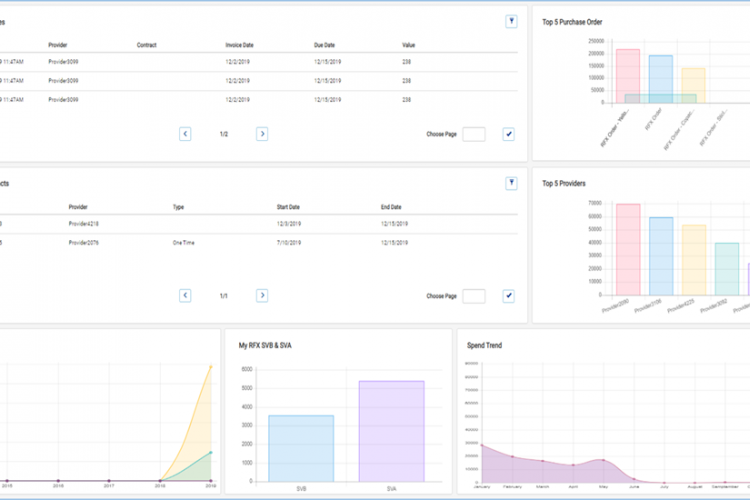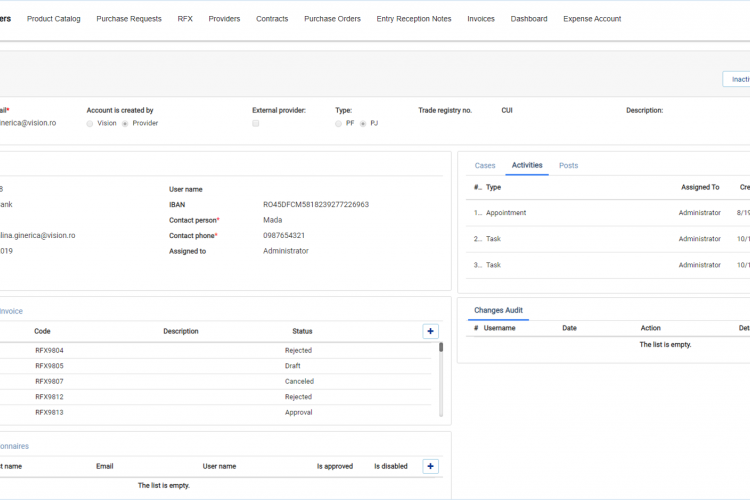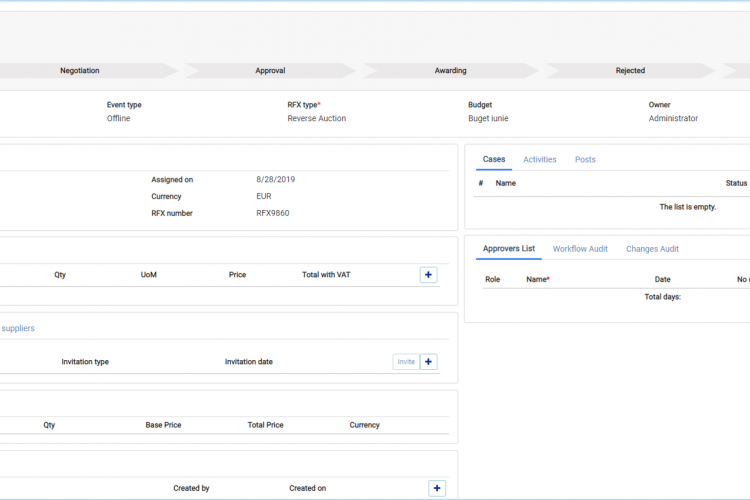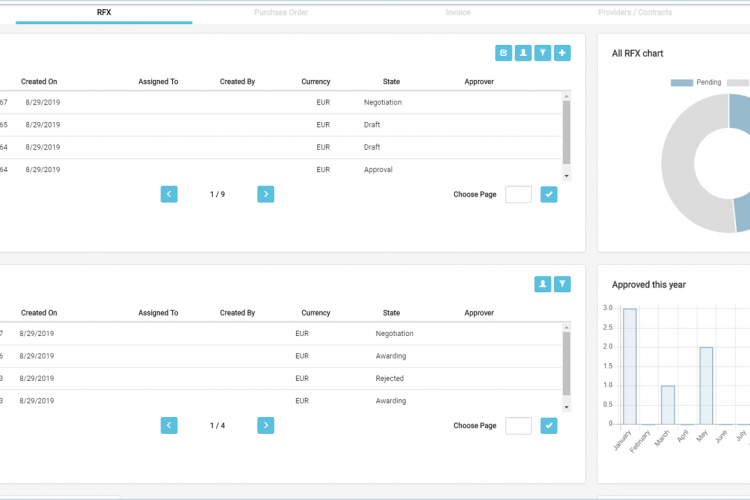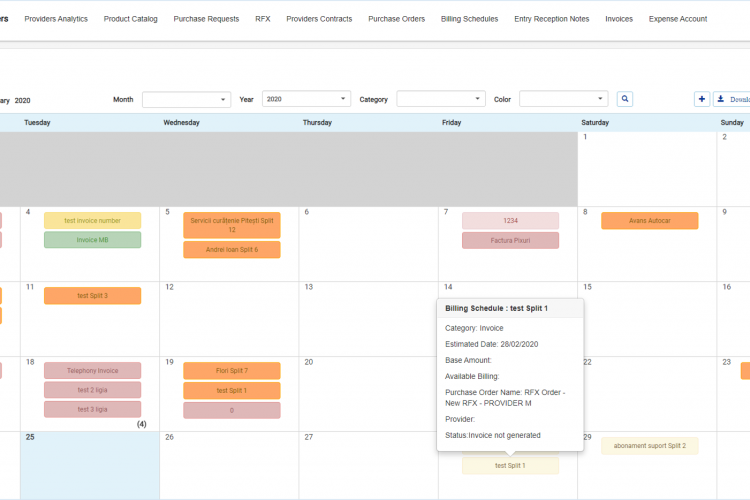Custom Workflows, Reverse Auction, Spend Insights, Budget and Quick Approvals
The e Sourcing platform automate all procurement related activities: from acquisition approval to negotiations, vendor selection, and contracting and invoicing
The project was implemented for a financial institution operating in the banking sector, headquartered in Bucharest, Romania. In an effort to modernize and streamline procurement operations, the organization sought to eliminate inefficiencies in approval workflows, budgeting control, and cross-departmental communication.
Initial Challenges
The procurement process was traditionally driven by manual workflows and fragmented documentation. Purchase requests were only approved at the end of the process, once all data had been submitted, including any associated RFx documentation. This rigid structure led to delays, limited flexibility, and a lack of transparency throughout the process.
Key challenges included delayed approvals, which stalled procurement actions, and limited flexibility for modifying or correcting requests mid-process. Decision-makers had little visibility into the status of requests until the final approval stage. As a result, departments operated without real-time oversight, creating inefficiencies that increased risk, delayed projects, and made it difficult to control costs or stay aligned with budgets.
The procurement team managed repeated delays and rework. Budget owners were unable to track expenses in real time, and request initiators often had to restart processes due to late-stage rejections. Other departments, such as finance and operations, also felt the impact of procurement bottlenecks.
The Smart Solution
To address these issues, the organization implemented a digital procurement module within its ERP platform. The new system introduced progressive approval workflows, allowing purchase requests and RFx submissions to be reviewed and accepted in stages. Budget owners gained the ability to reject or approve requests earlier in the process, improving responsiveness and decision-making.
The RFx module was restricted to Procurement team users, while Controlling managed budget setup and monitoring. Other departments were given view-only access to ensure clarity without disrupting ownership. Invoices and purchase orders followed a clear approval path, ensuring consistency and traceability. This setup created a more collaborative and accountable procurement environment.
Implementation Insights
Several challenges were encountered during the transition, beginning with resistance from employees adapting to the new system. To address this, training sessions and continuous support were provided to promote user adoption. Access permissions also required careful planning and testing to ensure each department had the appropriate level of access and visibility.
Coordinating cross-departmental workflows proved essential. Regular interdepartmental meetings were introduced to align processes, clarify responsibilities, and support a unified transition to the digital platform. With the proper structures in place, the new system quickly gained traction and became the foundation for more efficient procurement operations.
Results & Impact
The ERP-based procurement system delivered substantial improvements across speed, control, and collaboration:
Quantitative Results:
- Significant reduction in approval time, with decisions now occurring in real time or within hours
- Improved budget control, with fewer overruns and better visibility into procurement activity
- Cost savings achieved through streamlined workflows, better supplier management, and more effective tendering processes
Qualitative Results:
- Enhanced transparency across departments through real-time tracking of procurement stages
- Improved collaboration between Procurement, Controlling, and Finance, supported by shared access to consistent data
- Reduced manual errors and increased efficiency with automated workflows
- Greater employee satisfaction due to clearer processes, faster resolutions, and reduced frustration
These outcomes reinforced the value of automation and data integration in driving procurement performance and accountability across the organization.
Lessons Learned & Key Takeaways
The project underscored the importance of cross-functional planning and open communication during system implementation. Early and continuous training was essential for user adoption, and clear demonstrations of system benefits helped overcome initial resistance.
Mapping procurement workflows before rollout allowed for smoother transitions and better alignment across teams. Ongoing support and structured governance ensured that access controls, data consistency, and reporting accuracy were maintained. Ultimately, the project demonstrated how a digital procurement system can improve operational efficiency, reduce risks, and support smarter budgeting and purchasing decisions.


